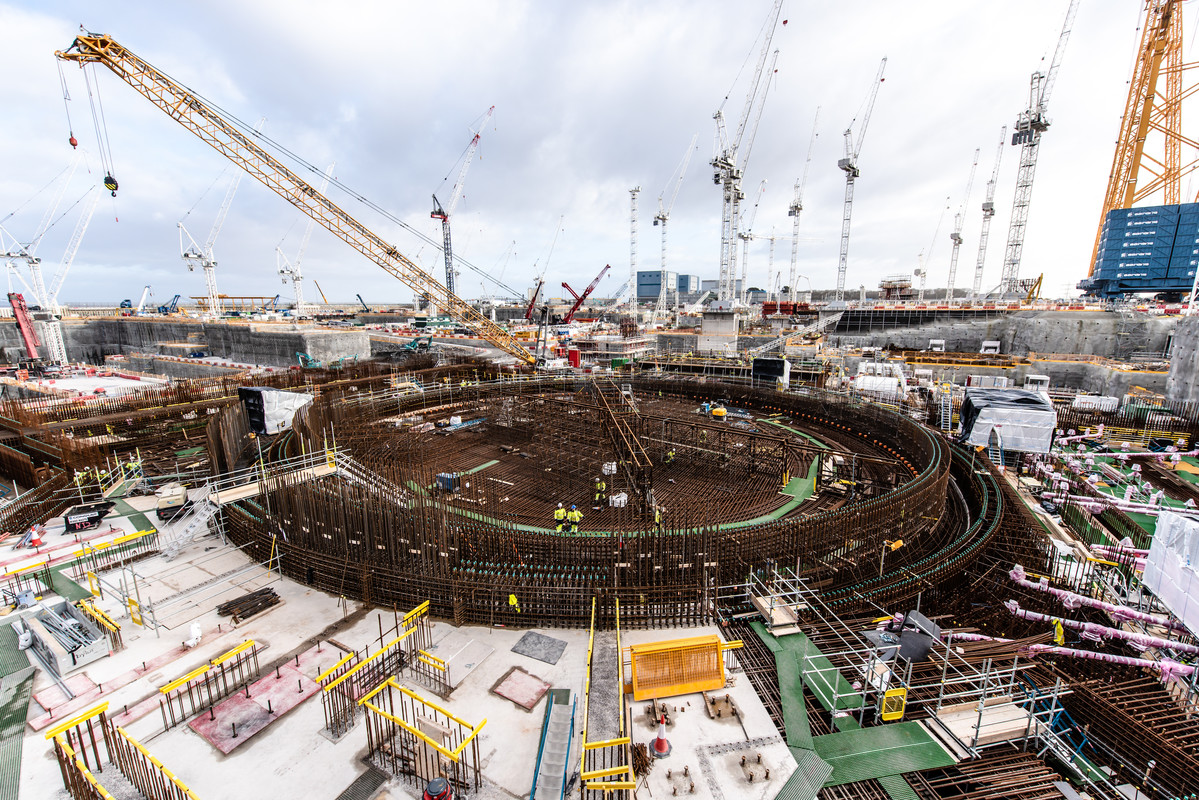WNISR
Strangely Belated Announcement of Hinkley Point C‑2 Construction Start
Strangely Belated Announcement of Hinkley Point C-2 Construction Start
EDF Energy continues to distort definitions of construction time

WNISR, 18 March 2020
On 10 December 2019, formal construction began on the second European Pressurized Water Reactor (EPR) at Hinkley Point C (HPC-2) in the U.K., according to an email by EDF Energy spokesperson Gordon Bell, dated 16 March 2020. According to an internationally accepted definition by the International Atomic Energy Agency (IAEA) and applied by WNISR, formal construction start is the first pouring of basemat concrete for the reactor building.
An early March 2020 update of the IAEA’s Power Reactor Information System (PRIS) indicated the construction start date for HPC-2 as 12 December 2019.
However, EDF Energy, majority plant owner of HPC together with China General Nuclear Corporation (CGN), has yet to announce formal construction start. In a repeat of their own approach to HPC-1, and as WNISR reported in December 2018, EDF appears to be seeking to artificially reduce the period between “construction start” and grid connection. Which means a shorter communicated “construction time”, which is a crucial indicator for the industry’s performance.
In June 2019, according to EDF and as reported by the World Nuclear Association (WNA), construction of HPC-2 was “well underway” but did not include so-called safety concrete. Trade journal Nuclear Intelligence Weekly, only available to subscribers, reported in its 20 December 2019 edition the beginning of basemat concreting and put the date at 10 December 2019, which EDF Energy now confirmed to WNISR.
A few days after WNISR, on 29 December 2018, had announced the HPC-1 construction start as 4 December 2018, the IAEA reported the HPC-1 construction start as 11 December 2018. The confusion does not end here. Gordon Bell: “For the IAEA, they consider the beginning of the pour to mark construction start (hence 12 Dec 2018 for unit 1), so I would expect them to similarly report 10 December 2019 as construction start for unit 2.”
It remains unclear, why there are differences in the date reporting between EDF, CGN (EDF’s partner) and the IAEA. However, it seems established that construction start of HPC-1 took place between 4 and 12 December 2018.
As of mid-March 2020, EDF Energy had not formally declared that construction began at HPC-2 and does not intend to do so. Rather than use the standard definition of official construction start, EDF Energy uses the term the “Jalon Zero” or “J0”, when the base mat concrete pour is completed. This stage is scheduled to be reached on 20 June 2020, more than six months after the pouring of basemat concrete began and therefore closer to planned grid connection. “Our communications will remain around the project milestone of ’J0’ for each unit”, spokesperson Gordon Bell stated.
EDF Energy’s strange lack of adhering to internationally accepted terminology, delaying the announcement of the construction start, can hardly cover up the fact that the HPC project has been plagued by serious delays even prior to the beginning of its implementation.
